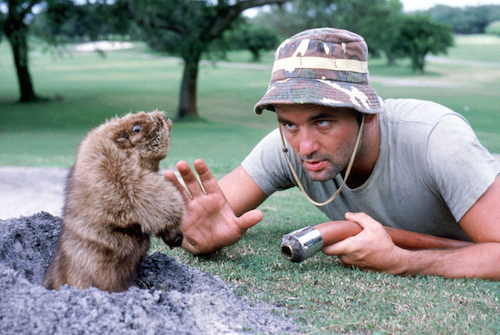Americans discover, and rediscover, trends in drinking just as they do in dining. A few years ago, the holidays were afloat in variously erudite or encouraging tomes on wine-tastings, great regions and terroirs, and beginners’ ways to “express” beverage flavors, not to mention a slew of wine guides especially for women.
Then the evangelicals of beer hopped up to defend that equally ancient and venerable tonic, followed by the prophets of whiskeys, shrubs and, well, tonics. Not to mention the numerous re-inventors of the cocktail.
All this alcohol-inspired abundance may explain why beverage experts are looking more into niche and novelty approaches this year.
PROPOSE A TOAST
Paul Dickson has written 65 nonfiction books on a variety of subjects, including cocktailing and toasting, language and baseball—often in combination (i.e., a history of drinking in baseball). Dickson’s latest, Contraband Cocktails: How America Drank When It Wasn’t Supposed To, began as a fascination with Prohibition-era recipe books that along the way naturally snowballed into an engaging discourse on classic cocktails replete with trivia, recipes, a list of -alcohol-related slang of the period and a fair amount of Golden-Era literary and celebrity gossip. As Dickson points out, the years of Prohibition coincided with some of the most flamboyant drinking in literature and on Broadway and the Silver Screen (think The Great Gatsby and W.C. Fields).
Although not exactly unknown, the asides are entertaining: Henry Craddock, who fled Prohibition Manhattan for London and compiled the still-revered Savoy Cocktail Book, told an interviewer in 1926 that he was then mixing up at least 280 cocktails—a number that did not include juleps, fizzes, punches, highballs, etc. Dickson defends the use of vodka in the Bloody Mary, though he does dispense with the common misconception that it has anything to do with the onetime Queen, and goes with the often-disputed version of the drink having been created at Harry’s New York Bar in Paris. (A disproportionate number of famous bartenders and recipe writers were named Harry, possibly giving a whole new meaning to the phrase “hair of the dog.”)
THE PUN'S THE THING
More self-consciously “literary” is a stocking stuffer for unrepentant punsters (actually, the sort of entertainment that used to be found in the bathrooms of the well-read). In Shakespeare, Not Stirred: Cocktails for Your Everyday Dramas, populist Shakespeare professors Caroline Bicks and Michelle Ephraim have pulled out all the stoppers, condensing the plots of the Bard’s plays into “riotous prose” and then naming slightly twisted cocktails for long-suffering characters. Consider the Lady Macbeth’s G-Spot (something like a Lear-ing bastard offshoot of a whiskey sour and a Rob Roy); Much Ado About Frothing (pisco sour with heart-shaped sprinkles) and chapters entitled “Shall I Campari Thee to a Summer’s Day?”
As Shakespeare was already an inveterate punster, the book is almost too much of a muchness, best consumed in small quantities. Maybe it could serve a peculiar book club—one reading, and one round of drinks, at a time.
AN APPLE A DAY
Longtime beer-book author and blogger Jeff Alworth has temporarily swapped suds for cider, which he believes is the next specialty brew, and which he pointedly defines not as the insipid fruit juice of childhood but a whole family of artisan beverages including Calvados and Lambig. In Cider Made Simple: All About Your New Favorite Drink, Alworth travels from apple farms in the U.S. to Canada, England, France and Spain, talking and tasting with artisan cider blenders. He discusses the roles of aromatics, acidity, sweetness, tannins, fermentation, florals, “funkiness”—and if this sounds reminiscent of a wine primer, it’s no accident. Craft cider can range in alcohol content from 3 percent to 10 percent. It may be blended from a carefully curated balance of apple species, like vine varieties. Some of the best cider is even riddled and disgorged, à la Champagne, although with a somewhat different technique.
Alford may be jumping the gun a little on calling cider the next favorite beverage, but he isn’t too far ahead of the curve: While its following is small compared to that of craft beer, the cider market is estimated to double every three years.
A CLASSIC MIXER
The glossiest book of the bunch, and the one best suited to the cocktail obsessive, is Adam Ford’s Vermouth: The Revival of the Spirit that Created America’s Cocktail Culture. It’s part love letter to what has become his actual profession—he’s the founder of Atsby, a groundbreaking vermouth producer—and a bit of a vanity production, as it’s hard for him to resist specifying one of Atsby’s vermouths in his recipes.
Either way, it’s a passion project. Ford has dived deeply into drinking history—about 10,000 years’ worth—to show that herb- and spice-infused alcohols have been recognized as medicinal and recreational potions since Neolithic times nearly everywhere around the globe. (Admittedly, that’s a pretty broad definition of vermouth, but he has a point.) He strolls through decades of America’s evolving cocktail culture: the New York Exhibition of 1853, when four different Italian “vermout” makers poured a liquor that Charles Dickens admired; the wild and wicked post-Civil War Manhattan; the “Mad Men” era; etc.
Oh, along the way, Ford brings up two more famous Harrys: Harry Johnson, famed author of the 1882 New and Improved Illustrated Bartender’s Manual, Or: How to Mix Drinks of the Present Style; and Harry Hill, owner of one of Manhattan’s first Gilded Age “concert saloons.” Maybe it’s a secret society.
This article was originally published in the November 2015 issue of BookPage. Download the entire issue for the Kindle or Nook.


























